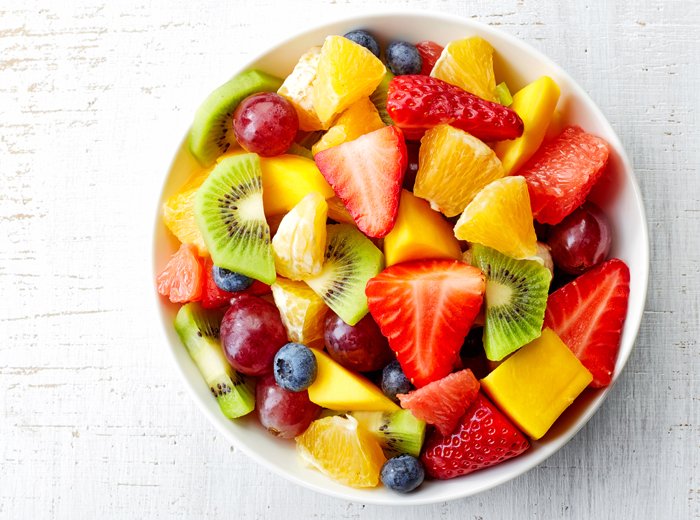Hygienic Manufacturing: A Smart Material Guideline for Decontamination in the Food Industry
934 Views |

จุลินทรีย์ก่อโรคที่ปนเปื้อนอยู่ในอาหารมักเกิดขึ้นจากความผิดพลาดในการรักษาสุขอนามัยในระหว่างขั้นตอนการเตรียมอาหาร การกระทำที่พบได้ทั่วไป อย่างการใช้อุปกรณ์ทำครัวปะปนกันระหว่างของดิบและของปรุงสุก อาจทำให้เกิดการปนเปื้อนของเชื้อโรคได้ เช่น ผักและผลไม้สดตัดแต่ง ซึ่งเป็นผลิตภัณฑ์ที่ไม่ผ่านกระบวนการให้ความร้อนก่อนนำมารับประทาน อาจจะปนเปื้อนจุลินทรีย์ที่มาจากเนื้อสัตว์ดิบ
งานวิจัยจำนวนหนึ่งรายงานว่า จุลินทรีย์สามารถมีชีวิตอยู่บนพื้นผิวของวัสดุได้นานหลายชั่วโมงจนถึงเป็นวัน และความเสี่ยงในการเกิดอาการเจ็บป่วยจากการปนเปื้อนในอาหารไม่ได้มีสาเหตุมาจากการปนเปื้อนที่พื้นผิวเพียงอย่างเดียว หากแต่ยังรวมถึงการปนเปื้อนที่เกิดขึ้นระหว่างที่ถ่ายโอนวัตถุดิบจากพื้นผิวหนึ่งสู่อีกพื้นผิวหนึ่งด้วย ด้วยเหตุนี้ จึงมีการวิจัยเพิ่มเติมเพื่อตรวจสอบถึงปัจจัยที่มีผลต่อการปนเปื้อนของแบคทีเรียจากเนื้อสัตว์สู่พื้นผิวภาชนะและจากพื้นผิวภาชนะสู่เนื้อสัตว์ ซึ่งพบว่าการล้างพื้นผิววัสดุด้วยด้วยน้ำประปาไม่ช่วยลดปริมาณของเชื้อแบคทีเรีย อย่างไรก็ตาม งานวิจัยบางชิ้นแสดงให้เห็นว่าวัสดุที่มีกลไกในการทำความสะอาดตัวเอง เช่น พอลิเอทิลีน และสเตนเลส เมื่อใช้ร่วมกับน้ำยาทำความสะอาดและน้ำจะสามารถลดการปนเปื้อนระหว่างเนื้อสัตว์ดิบและผลิตภัณฑ์ที่ทานสดได้อย่างมีนัยสำคัญ และต่อไปนี้คือแนวทางที่น่าสนใจในการปรับปรุงพื้นผิววัสดุเพื่อลดการปนเปื้อนจากจุลินทรีย์ในอุตสาหกรรมอาหาร
แนวทางการปรับปรุงพื้นผิววัสดุที่น่าสนใจ
1. การปรับเปลี่ยนคุณสมบัติของพื้นผิวสัมผัส
จุลินทรีย์มักจะเกาะติดกับพื้นผิวเพื่อรวมตัวกันจนเกิดเป็นโคโลนีที่ใหญ่ขึ้น และพัฒนาเป็นไบโอฟิล์มที่สามารถปนเปื้อนในอาหารและเครื่องดื่มได้ จุลินทรีย์เหล่านี้ยากต่อการกำจัดแม้จะใช้น้ำยาทำความสะอาด สำหรับแนวคิดหลักของการปรับเปลี่ยนพื้นผิวสัมผัสคือการฆ่าเชื้อหรือป้องกันไม่ให้จุลินทรีย์มาอาศัยบนพื้นผิวได้ เป็นการลดการสร้างโคโลนีที่ยากต่อการกำจัด รวมถึงสามารถฆ่าหรือป้องกันการสะสมของเชื้อจุลินทรีย์ได้แม้อยู่ในจุดที่น้ำยาทำความสะอาดหรือการทำความสะอาดด้วยวิธีปกติเข้าถึงได้ยาก นอกจากนี้ยังสามารถลดการใช้น้ำยาทำความสะอาดลงได้ และไม่จำเป็นต้องใช้น้ำยาทำความสะอาดชนิดที่ออกฤทธิ์แรงในการขจัดสิ่งสกปรกที่ฝังแน่น ทำให้ต้นทุนในกระบวนการทำความสะอาดมีราคาต่ำลงด้วย การปรับเปลี่ยนคุณสมบัติของพื้นผิวยังรวมถึงการเลือกใช้วัสดุอลูมิเนียมที่มีการเติมอนุภาคนาโนซิลิกา (Silica Nanoparticles) ซึ่งมีประสิทธิภาพในการลดการเกาะติดของเชื้อ Salmonella typhimurium LT2 และ Listeria innocua ได้กว่าร้อยละ 99
ยังมี Smart Material อีกหลากหลายรูปแบบ สามารถอ่านได้ในบทความเต็ม...
A high percentage of foodborne illnesses are caused by a failure to maintain hygiene during food preparation. A common practice that is the major cause of the contamination is the use of the same kitchen equipment for both raw materials and ready-to-eat foods. As a result, it is possible that pathogenic microorganisms from raw meat will contaminate fresh fruits and vegetables that have not been thermally processed before consumption.
Several studies have reported that the microorganism could survive on the food contact material for hours or days. However, the risk of illness from food contamination is caused by more than just surface contamination. It can also occur when raw materials are transferred from one surface to another. As a result, additional research has been carried out to investigate various factors influencing bacteria's migration from meat to contact surfaces and from surface to meat. And according to their findings, surface rinsing with tap water had no effect on reducing bacterial loads to safe levels. Meanwhile, some studies have found that using self-cleaning surfaces like polyethylene and stainless steel with detergent and water could significantly reduce contamination between raw meat and fresh produce.
Here are some interesting guidelines for adjusting the surface of materials to restrict microorganisms in the food industry.
Guidelines for Adjusting the Surface Materials
1. Surface Modification
Microorganisms usually stick to the surface and colonize, forming biofilms that contaminate food or beverages. It is also difficult to clean, even with sanitizer. The primary goal of surface modification is to disinfect or prevent microbes from colonizing the surface, thereby reducing the formation of colonies that are more difficult to remove. It also includes killing and preventing microorganisms that have accumulated in areas that are difficult to clean with traditional cleaning methods and in difficult-to-reach areas. Furthermore, since there are fewer bacteria on a surface, the amount of sanitizer used can be reduced. Harsh sanitizers are also no longer required to remove stubborn messes. Plus, the overall cost of the cleaning process will be reduced as a result. Surface modification includes the use of aluminum material with added silica nanoparticles, which can reduce the adhesion of Salmonella typhimurium LT2 and Listeria innocua by more than 99 percent.



